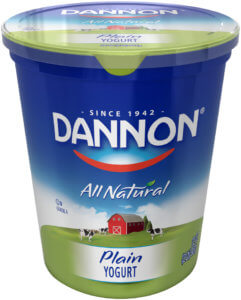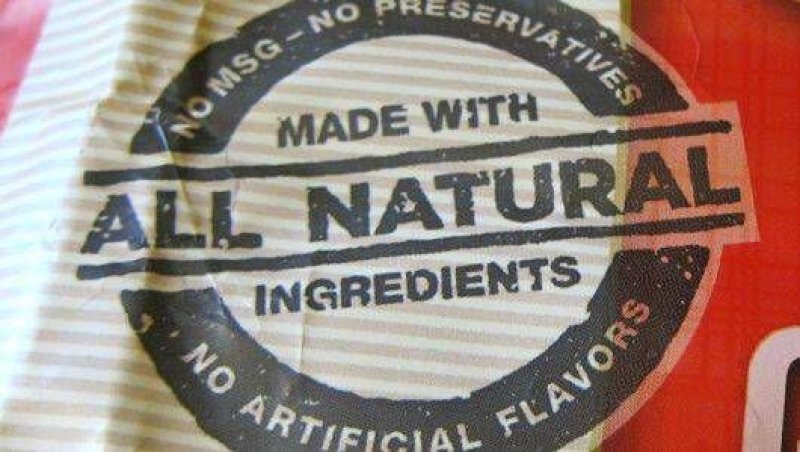What the FDA has not said about defining “natural” is that prescribing a definition would be an exercise akin to medieval theologians trying to define how many angels danced on the head of a pin. Science provides no natural dividing line for defining “natural.” Additional resources will not help FDA. FDA would be picking winners and losers by drawing lines that will not be easily defensible. In other words, by defining the term “natural,” the FDA will be involved in politics, not science. Traditionally the FDA tries to stay a scientific regulatory agency as much as possible.
As a consequence of FDA’s understandable reluctance to define the term, food companies and consumers look to the informal comments that the FDA made in 1993 about what the term “natural” means: “… nothing artificial or synthetic (including all color additives regardless of source)” and “minimal processing” – whatever “minimal processing” encompasses. Remember that these are informal comments by the FDA and do not carry any legal authority as a binding definition.
In response to the fact that no food law definition of “natural” exists, Consumer Reports (a prominent U.S. consumer magazine) has urged the FDA to ban the use of the term on food labels. Consumer Reports holds the position that the term is “inherently false or misleading” on food labels and that any FDA attempt to define the term for food law would become a stew of confusion and unintelligibility. So far, FDA has also been unwilling to use its statutory powers to ban the term from food labels. FDA may be reluctant because of U.S. constitutional protections for freedom of speech. After all, the word “natural” is a natural word in the vocabulary of American consumers and food companies.
 If the FDA won’t define “natural” and won’t ban the term, what is a red-blooded American to do if she thinks she has purchased a food labeled “natural” only to read the ingredient label very carefully at home and decide that she was misled into purchasing an unnatural product? The answer: find a class-action lawyer and engage in that American national (or is it, natural) pastime – litigation. Or more precisely, sue the food company by asserting various federal and state common law and statutory claims for false and deceptive advertising, unfair and fraudulent business practices, and consumer deception. Now we’re making sausage!
If the FDA won’t define “natural” and won’t ban the term, what is a red-blooded American to do if she thinks she has purchased a food labeled “natural” only to read the ingredient label very carefully at home and decide that she was misled into purchasing an unnatural product? The answer: find a class-action lawyer and engage in that American national (or is it, natural) pastime – litigation. Or more precisely, sue the food company by asserting various federal and state common law and statutory claims for false and deceptive advertising, unfair and fraudulent business practices, and consumer deception. Now we’re making sausage!
These lawsuits have focused on three textures of not “natural”:
- synthetic or artificial chemicals such as preservatives, colorings, or high-fructose corn syrup;
- chemicals used in the production of a food or a food ingredient such as pesticides, herbicides, or synthetic fertilizers, particularly if chemical testing can taste a chemical residue; and
- genetically modified organisms either, directly, as an ingredient or raw food from a genetically-modified crop or, indirectly, as a food product from animals that have consumed genetically-modified feed even though no trace of that feed exists in the food (e.g, cheese or meat).
Many lawsuits present a mixture of these three textures about being not “natural,” though several recent cases have been 100% pure disputes about genetic modification.
The judicial and food company responses to these “natural” label lawsuits have been a smorgasbord of legal delights.
Food companies have settled some of these lawsuits by agreeing with the complainants to substitute ingredients in the product or to rewrite the label to delete the word “natural.” In these settlements, the food companies generally did not admit the merits of the legal claims. By settlement, however, the company avoided the costs of litigation and the potential negative publicity that could bubble up among the company’s consumers. Of course, the settlement invariably came with a financial sweetener of some measure for the named complainant in the class-action and the lawyers who filed the lawsuit.
In some lawsuits, the courts avoided the sticky substantive issues by deciding the case on issues that are not about the meaning of the term “natural”. For example, several courts have dismissed the lawsuit by filtering out plaintiffs who had not purchased the not “natural” product. Without being an actual purchaser, some judges ruled that the complainant had not shown any injury requiring judicial intervention to provide a remedy. Other courts have ruled against the complainants, making claims related to approved pesticides as not “natural,” that the federal act governing the registration and labeling for pesticide usage and residues preempted the lawsuit. Under the Federal Insecticide, Fungicide, Rodenticide Act (FIFRA), the Environmental Protection Agency (EPA) prescribes the mandatory label. These courts ruled that the “natural” label lawsuit would make food companies label their food products with words contrary to the EPA mandatory label. In the U.S., federal law can be supreme over state law and common law and, thereby, preempt legal claims based on state statutes and the common law.
Still, other courts have evaded the substantive issues by holding particular “natural” label lawsuits in abeyance. These judges have decided that the FDA, not courts, has primary responsibility (jurisdiction) for defining the term “natural.” The judges have paused the particular lawsuits to allow the FDA time to provide a food law definition. As indicated in the opening paragraphs to this commentary, the FDA responded to these judicial requests by stating that the FDA did not intend to provide a definition. But the FDA does now have a proposal, three years old, for consultation about defining the term “natural.” Maybe like cheese and wine, the definition will become sharper and have fuller body by going through the process of legal aging.
 And at last, in four recent cases, courts have issued judicial opinions addressing the substantive issues in “natural” label lawsuits.
And at last, in four recent cases, courts have issued judicial opinions addressing the substantive issues in “natural” label lawsuits.
In General Mills, Glyphosate Litigation, 2017 WL 2983877 (D. Minn., July 12, 2017), U.S. District Judge Michael J. Davis dismissed the complainant’s lawsuit with prejudice. Judge Davis opined,
The Court concludes that Plaintiffs have failed to plausibly allege tht the statement ‘Made with 100% Natural Whole Grain Oats’ means, or could be interpreted by a reasonable consumer to mean, that there is no trace of glyphostate in Nature Valley Products. It is implausible that a reasonable consumer would believe that a product labelled as having one ingredient – oats – that is “100% Natural” could not contain a trace amount of glyphosate that is far below the amount permitted for organic products. The Court further concludes Plaintiffs fail to state a claim because Defendant (General Mills) did not represent or warrant that Nature Valley Products would be free from trace glyphosate.
In Kinn v. Quaker Oats Company, 2017 WL 3922068 (N.D. Ill., Sept. 6, 2017), U.S. District Judge Charles R. Norgle dismissed the complainants’ lawsuit with prejudice on the three grounds: 1) lack of standing for claims based on products complainants did not purchase; 2) federal preemption because federal statutes and regulations exist “expressly deeming safe and permitting trace levels of glyphosate”; and 3) “also failed for other reasons, including that Plaintiffs’ claims were implausible as a matter of law. … Plaintiffs have not alleged the omission of any material fact in Quaker’s public representations.” Under the Federal Food, Drug and Cosmetic Act, the FDA has authority to take action for false or misleading labeling when a food company omits a “material fact” about its food product or its ingredients. Federal Judge Norgle apparently concluded, as a matter of law, that crops being grown with a herbicide (glyphosate) is not a “material fact” that a food company must state on its label.
In Lee v. Conagra Brands, Inc., 2017 WL 6397758 (D. Mass., October 25, 2017), U.S. District Judge Richard D. Sterns dismissed a lawsuit complaining of deceptive advertising because Conagra vegetable oil came from genetically-modified corn, soybean, or canola. Judge Sterns dismissed the lawsuit because the “100% natural” label was consistent with FDA policies about labeling related to genetically modified crops. Although the FDA has not formally adopted a definition of “natural,” the court noted that FDA has consistently stated:
it is not aware of any information showing that foods derived by these new methods [genetic modification] differ from other foods in any meaningful or uniform way, or that, as a class, foods developed by the new techniques present any different or greater safety concerns than foods developed by traditional plant breeding.
Thus, the court said that FDA had ruled against mandatory labeling of genetically-modified food products. In an aside, Judge Sterns added, “For what it is worth, humans have been genetically altering organisms for our use for about 30,000 years.”
Fourth and finally, U.S. District Judge Katherine B. Forrest dismissed a lawsuit claiming that Dannon yogurts cannot be labeled “natural” because the cows’ milk came from cows that had eaten feed formulated with genetically-modified crops. Podpeskar v. Dannon Company, Inc., 2017 WL 6001845 (S.D. N.Y., December 3, 2017). Judge Forrest opined,
There is no legal support for the idea that a cow that eats GMO feed or is subjected to hormones or various animal husbandry practices produces ‘unnatural’ products; furthermore Dannon does specifically represent that its products are either GMO-free or not given hormones or antibiotics. The Court therefore finds plaintiff’s argument too speculative to state a plausible claim and grants defendant’s [Dannon’s] motion to dismiss.
 While the four cases specifically discussed and cited above do not mean an end to “natural” label lawsuits, these four cases may indicate a trend. The courts will not define natural but the courts will say what is not unnatural – the breeding and agronomic methods by which farmers and livestock owners grow their crops and animals. Might not this be a recipe for the FDA too?
While the four cases specifically discussed and cited above do not mean an end to “natural” label lawsuits, these four cases may indicate a trend. The courts will not define natural but the courts will say what is not unnatural – the breeding and agronomic methods by which farmers and livestock owners grow their crops and animals. Might not this be a recipe for the FDA too?
In other words, the FDA does not need to define the term “natural.” But the FDA could lessen the volume of “natural” label litigation by issuing a regulation making clear that the breeding and agronomic methods by which farmers and livestock owners grow their crops and animals does not preclude a food company from advertising the resulting food or food ingredient as “natural.” If the FDA did so, then two of the three textures giving rise to this litigation would be ended; this FDA regulation would preempt two of the three textures of litigation. Thereafter, “natural” label litigation would be legally restricted to lawsuits about synthetic and artificial chemicals and minimal processing.
Moreover, FDA should seriously consider following the recipe provided by these four named, recent opinions because the U.S. mandatory labeling law for genetically-engineered (GE) foods will not have an impact on “natural” label litigation. Even after U.S. foods carry mandatory GE labels (final regulations due in August 2018), food companies may still place the word “natural” on the label. And class-action lawyers and their consumer complainants may still file lawsuits claiming that these GE foods violate consumer expectations about the meaning of “natural.”
During preliminary debates about the labeling law, Congress did discuss proposals mandating that either FDA or the USDA provide a definition. However, Congressional committees deleted that “natural” provision from the legislation as it progressed through Congress. Consequently, the U.S. mandatory labeling law, as adopted, is completely silent about the “natural” label controversy.
Finally, this commentary discussed the litigation filed in United States federal courts. Many cases exist in State courts under state consumer protection laws. Without the FDA getting involved to create federal preemption, state litigation will continue despite the four cited, recent federal opinions that provide a recipe for significant resolution of this litigation. Thus, with the U.S. mandatory labeling law silent about the term “natural,” the FDA needs to roll up its sleeves, put on its baker’s hat, and bake it the regulatory pan. Minimal recipe (see the named four opinions in this commentary) and baking time recommended.
Drew Kershen is professor emeritus at the University of Oklahoma College of Law. He has taught, researched and lectured on agricultural biotechnology law and policy. He is a member of the Genetic Literacy Project’s Advisory Board.
A version of this article was originally published in the World of Food Ingredients as “The Ins and Outs of ‘Natural’ Labels” and has been republished here with permission.































